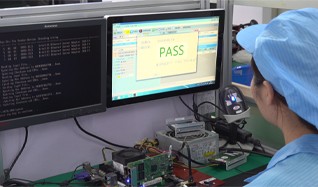





In the era of big data, AI, 5G, and short videos are developing rapidly, and the amount of data is experiencing explosive growth.According to IDC predictions, the total amount of global data will increase to 175ZB (1ZB=1 trillion GB) in 2025, approximately 10 times that of 2016.To meet the growing demand for data storage, RAID adapters have become a common and crucial storage solution.

What is RAID?
RAID (Redundant Arrays of Independent Disks), a redundant array of independent disks and is a disk array technology.The principle is to use data redundancy to form an array of multiple hard drives to improve data storage capacity and I/O performance.To put it simply, RAID allows multiple disks to work together in a coordinated manner to unleash the full performance of the disk. RAID technology is divided into software RAID and hardware RAID. Compared with software RAID, hardware RAID has better performance and more stability than software RAID. Commonly used RAID levels include RAID 0, 1, 5, 6, 10, JBOD, etc.
What are the advantages of RAID adapters?
A RAID adapter, also known as an array adapter that is a board card with the implementation of the RAID function. It is usually installed on the PCIe slot of the computer motherboard and is responsible for processing the distributed storage and reading and writing of data. RAID adapters are widely used to store large amounts of data through interfaces such as SATA and SAS. Its main advantages are reflected in the following four aspects.
*Improve reading and writing performance
By combining multiple disks into an array, RAID adapters can take advantage of parallel processing and data distribution to increase the storage system's reading and writing performance. For example, RAID 0 stores data blocks dispersedly on multiple disks to achieve parallel reading and writing of data and improve reading and writing performance; RAID 10 combines the advantages of RAID 1 and RAID 0 providing data redundancy and improving parallel reading and writing performance.
*Expand storage capacity
RAID adapters have flexible scalability and can connect and respond to SSD. They also allow disks to be added or replaced in the storage system to expand or upgrade storage capacity. There is no need to shut down the server or interrupting services that is forming a high-performance large-capacity storage solution.
*Provide fault tolerance function
RAID adapters can achieve data fault tolerance and redundancy through different RAID levels. For example, RAID 1 can ensure that data will not be lost due to hard disk failure through mirror backup; RAID 5 and 6 provide fault tolerance through data verification to achieve data recovery, which greatly improves the fault tolerance of the RAID system.
*Improve server stability
The built-in processor on the RAID adapter eliminates the need for server CPU computing, leaving CPU resources for the main application software. At the same time, after the RAID adapter is separated from the operating system, it can perform various operations on the hard disk, which greatly improves the stability of the server system.
Facing the challenge of massive data, the role of RAID adapters is significant. LR-LINK has a series of RAID adapter solutions that support SATA, M.2, SAS and other interfaces to help users flexibly respond to storage expansion. They meet the data storage and protection needs of terminal applications such as servers, storage devices, workstations, and hardware accelerators and are widely used in fields such as big data, video surveillance, game development, and scientific research.
LR-LINK supports product customization, and you are welcome to call us for consultation.
